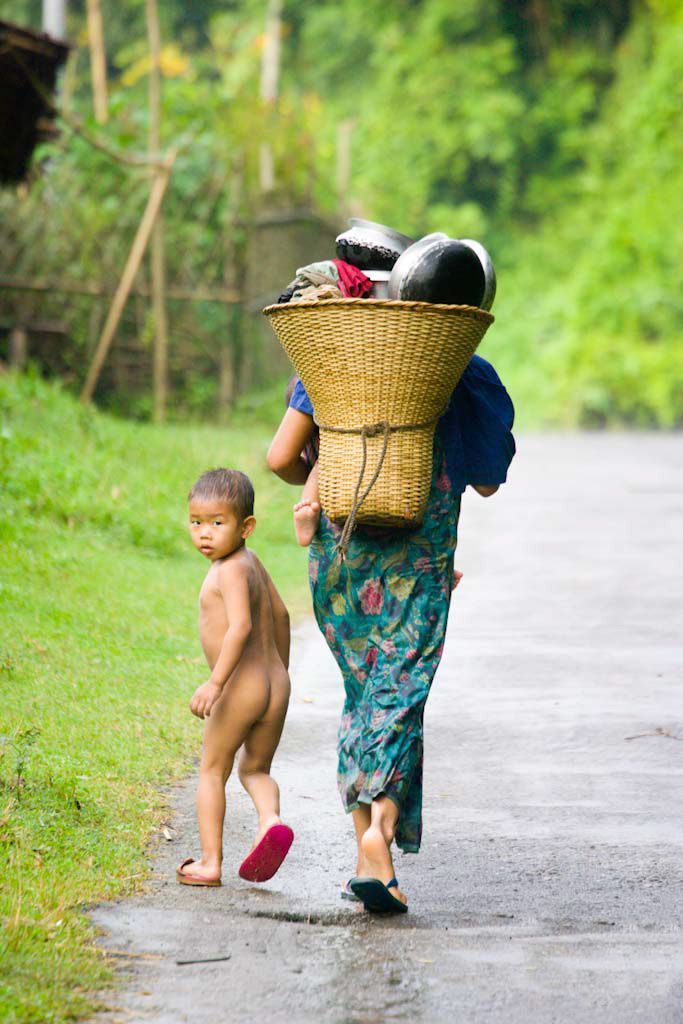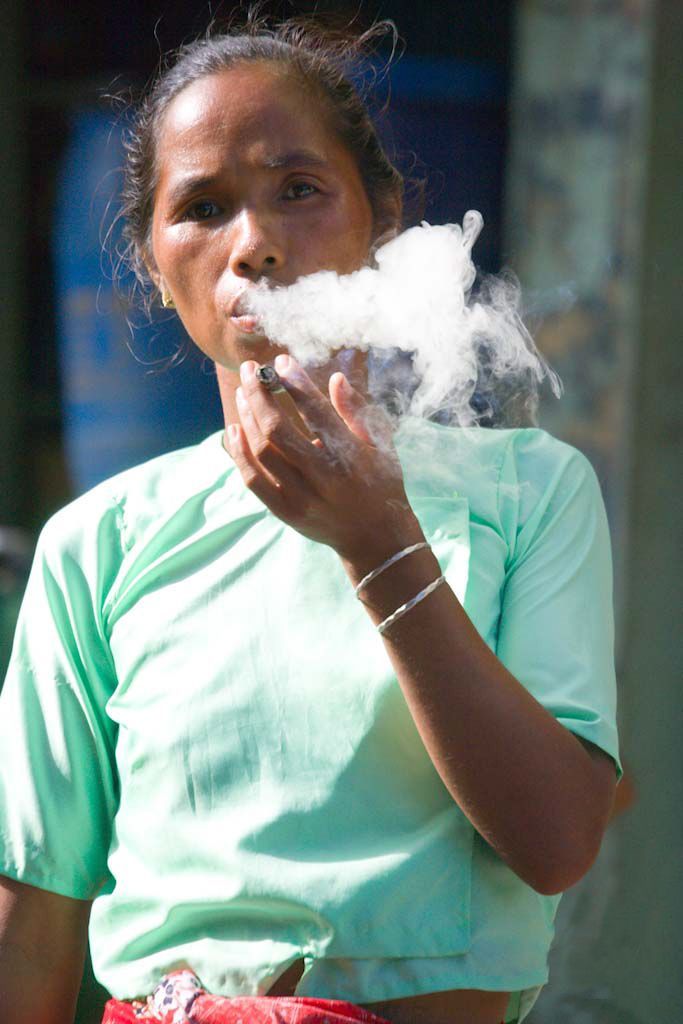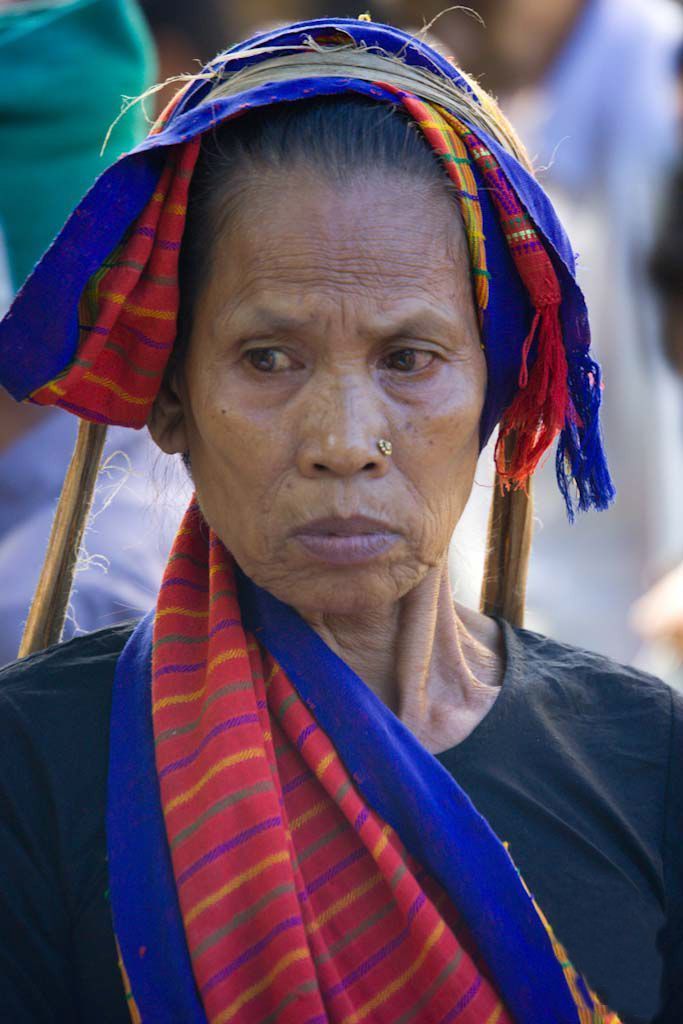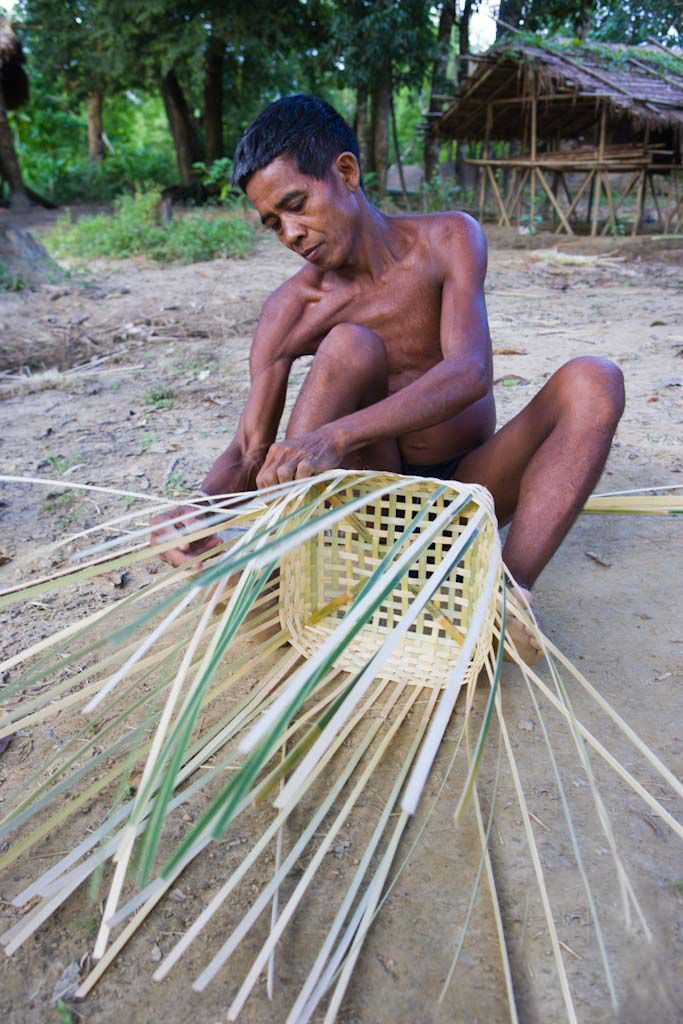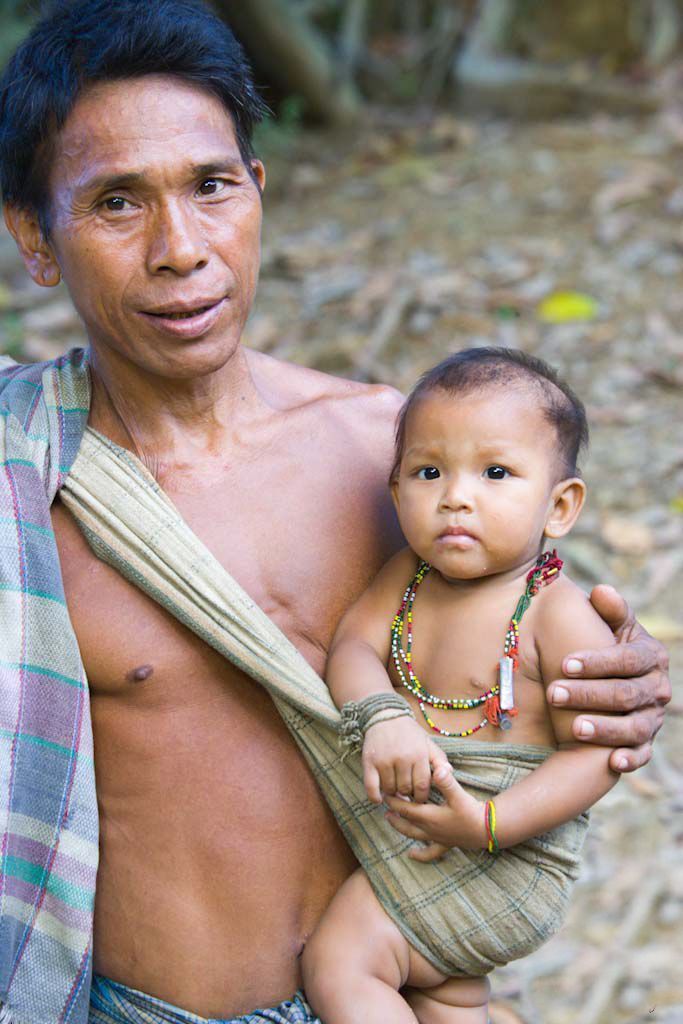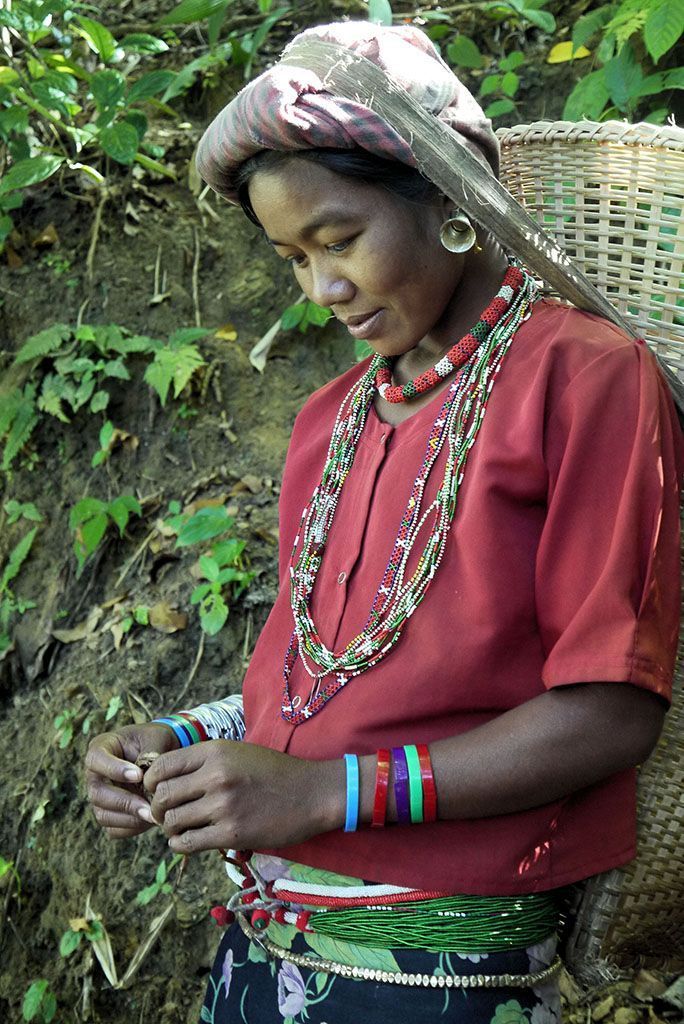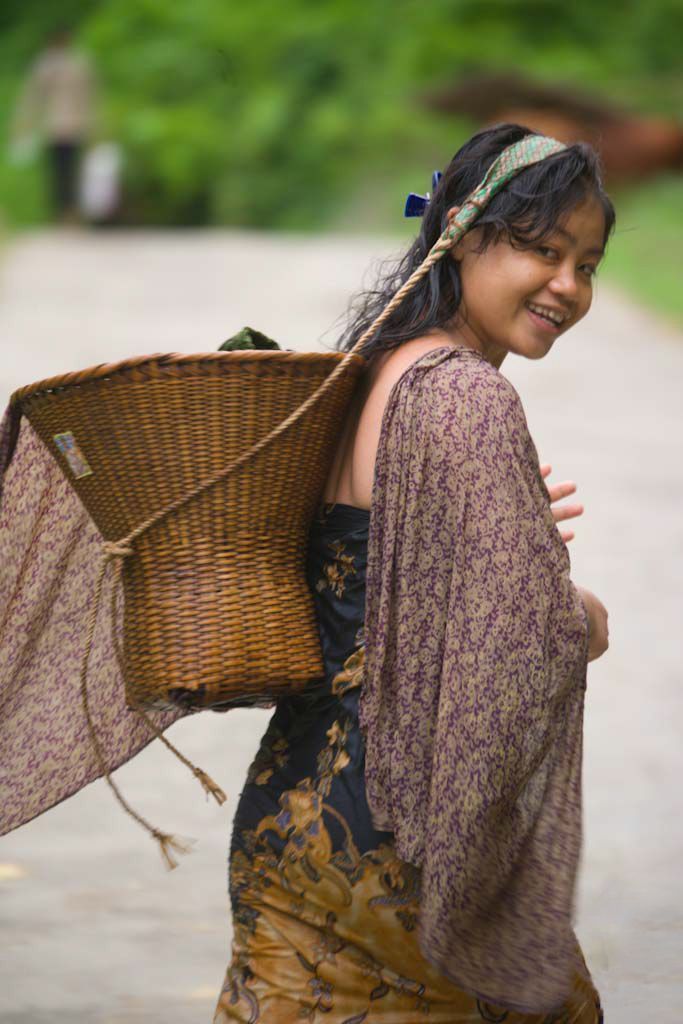Our People
Meet the indigenous people of the Chittagong Hilltracts...
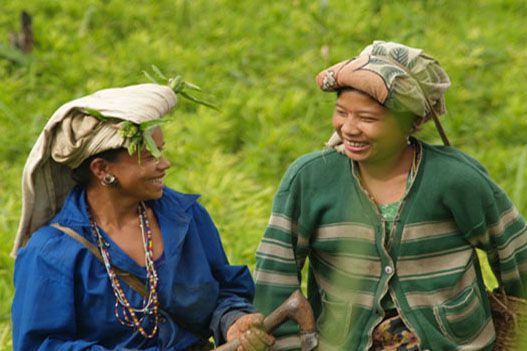
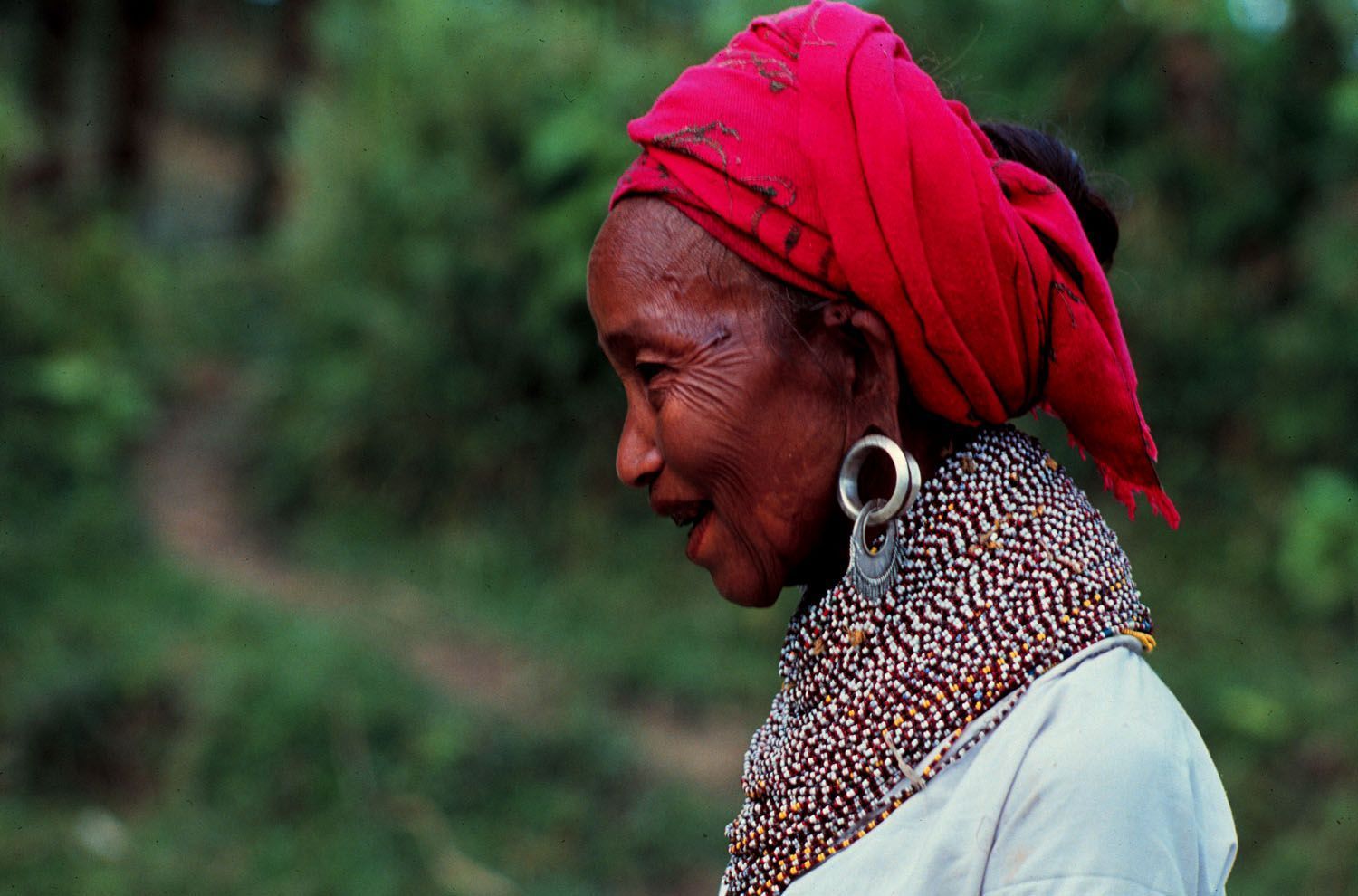

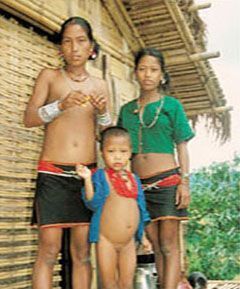
The Mru: A hidden tribe
The solitary, independent and peace-loving Mru people have lived in the hill tracts of southeastern Bangladesh and western Burma for centuries – their small population split almost in half by the border. Many scholars believe them to be the original inhabitants of the region. Mru prefer to live on the hilltops, remote from even other hill tribes. Their villages are easily distinguished by sacred bamboo totems, presided over by guardian spirits. They live in large and cozy thatch-roofed bamboo cottages raised on stilts, with large open decks. Their life is based on jhoom (slash and burn) agriculture. Government resettlement of non-tribals on hereditary Mru lands makes it increasingly difficult for them to survive, many are now moving deeper into the interior in the vain hope of finding virgin lands. This migration tends to breakup their traditional society. They are in urgent need of a supplemental source of income. Small-scale marketing of traditional handicrafts along with responsible ecotourism (managed by them) may provide a sustainable alternative. This will engage traditional skills of making their own unique clothing, blankets, instruments and various household and cultural items.

Tender Genders
The primary duty of both genders is agriculture. Women’s other responsibilities are cooking, firewood gathering, making cotton thread & waist-loom weaving, embroidery, beadwork, etc. They carry heavy burdens using the traditional forehead strapped back-baskets. Both sexes acknowledge women work harder than men, brides are a little older than the grooms to ensure a strong woman to run their household. Both genders care and tend the children equally. Of all the tribes, they are the most affectionate and caring and would not imagine disciplining their children in any way. They go to great odds and endure much hardship to avoid any sort of conflict or confrontation. This trait leaves them vulnerable to exploitation by other tribes and settlers. Male duties other than farming, are home-building, hunting, basket-weaving, making musical instruments and other handicraft items, as well as cooking for festivals. Musical entertainment is the almost exclusive function of unmarried boys, who unabashedly groom and adorn themselves with combs, wild flowers and heavy silver jewelry.
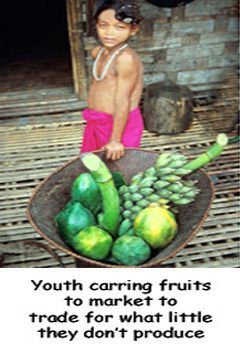
A gracious people
Mru are very egalitarian and have no castes and few hereditary positions. They are extremely non-confrontational and take pride in being patient & peaceful. Each household has an equal voice in all village affairs. They are one of the few indigenous peoples who have staunchly retain their own unique culture, rituals and beliefs. With no functional leadership or hierarchies, this lack of higher-level social organization makes it difficult for them to avail of, or cooperate in joint efforts for ‘development’ or cultural preservation. Thus they are one of the least ‘modern’ of all the hill tribes, consciously preserving their distinct lifestyle. Mru are especially known for their mystical music, ascetic dress, exotic appearance and long, flower-adorned hair kept in topknots. Curiously, Mru have no sense of being ‘tribal’, as do other indigenous peoples. The word ‘Mru’ simply means ‘man’ — its those other than Mru that seem ‘exotic’. They consider themselves just ordinary folks. Mru value their independence above all else, just desiring to pursue a traditional lifestyle free from domination or exploitation.
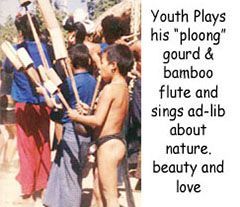
A sublime aesthetic
The Mru fully enjoy the beauty of nature – hills, rivers, flora and fauna. They are especially fond of music, through which they express this love of all things beautiful. They sing all day – while farming, cooking, to their children, to themselves, to the trees, mountains – about anything that is pleasing. Words are often ad-lib, made up at the moment about nature, love and day-to-day activities. The simple bamboo flutes (prui) played by young women and the more elaborate mouth organs (ploong) of varying sizes played by the young men made from gourds & bamboo, are the basic instruments. The largest ploong has eight long pipes and sounds somewhat bagpipe-like. Drums and gongs accompany the wind instruments and lyrics. The music is based on set tone sequences, which are repeated indefinitely, the lyrics rather like rap. During the winter months (November to February), young Mru men travel around to woo the girls and by singing questions and answers, often into the early morning, the girls test the suitors qualifications and sincerity.

A true Mru welcome
Smile_FaceAs part of their traditional culture, the Mru simply love to entertain guests – who will surely come away richer by the association of these unique and interesting people. Click to find out how you can do just this. Come visit them and the other fourteen native peoples of the Chittagong Hill Tracts. Stay in a ‘Bawm’ village – on the fabulous lotus-filled Boga lake shore – then trek up to Keokeradang, the highest peak (around 4,500 ft. above sea level) in Bangladesh, and return to enjoy a ‘guitar evening’. Visit the Buddhist ‘Marmas’ while in Bandarban and sip their ‘home-brew’ slowly, while relaxing by the Sangu river. Only two more of the unlimited opportunities that await, as you discover this region and it’s peoples for yourself.
FACES OF BANGLADESH
Your enchanting hosts invite you in for some fine home-brew and a mystical musical evening…
“We were both deeply moved by experiencing life among the Mru people. Truthfully, it was one of our more profound and rewarding experiences ever (and we’ve traveled widely over the years). We enjoyed ourselves tremendously all the while learning about an amazing culture and a truly wonderful people — please thank all our dear, dear friends in Lusain village for us. We’ll never forget them and their hospitality.”
— Dr. & Mrs. Johnstone, Edmonton, Alberta, Canada —


